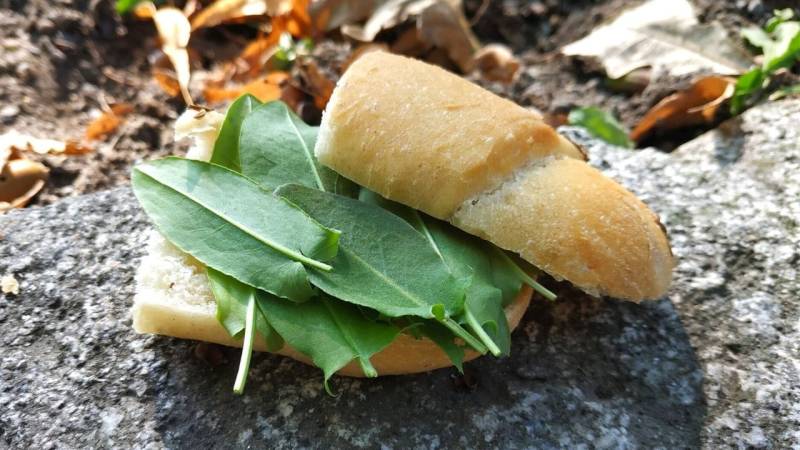
Edible plants: these emergency foods can be found in the forest (list + pictures)
👉 The key facts from this guide
- Edible plants can be an important source of food in emergencies. You should know and be able to identify some of them to survive in the wilderness.
- Some of the most significant edible plants are ribwort plantain, broadleaf plantain, dandelion, wild garlic, nettle, ground elder, wood sorrel, chickweed, wild strawberry, raspberry, blackberry, daisy, sorrel, and many more.
- In addition to plants, nuts, and fruits such as hazelnuts, walnuts, chestnuts, and acorns can be an essential source of food. They provide significant fats and nutrients.
- It is important to correctly identify the plants to avoid poisoning. Some plants can have toxic lookalikes.
- Some plants can also have medicinal properties and be used to treat wounds or illnesses.
- To optimize their nutrients, it is critical to harvest the plants at the right time and prepare them correctly.
Imagine: You would be confident that you won't starve in the woods.
Actually, this is possible. Because you know exactly which plants you can eat in case of an emergency.
Maybe you're thinking now that it's hard to identify all the plants.
It certainly is because no one knows all the plants in the world. Therefore, we limit ourselves to the most important ones in our forests.
Let's get started.
Why You Should Know a Few Edible Plants
It's so simple: Those who know plants can simply wander through the forest and find food.
This knowledge gives you confidence in yourself to find edible things.
Those who are equipped with this confidence approach a hike in the woods with a much more open attitude.
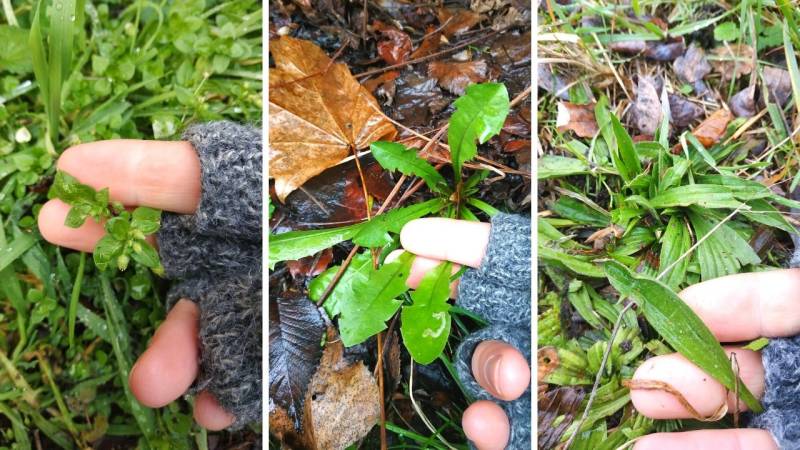
Because if you can find food in your surroundings, it's not so bad to get lost.
This attitude comes with a mentality where you only need a minimal plan of action.
You feel comfortable just wandering around and being led by your body.
Look, I asked some outdoor enthusiasts if they have ever eaten plants from the meadow or forest. The result:

What does that mean? You don't have to be afraid at all. Almost 75% of those surveyed have eaten or at least tasted plants. So, don't be shy, go for it.
And if you ever find yourself in an emergency, plants are your first choice. Therefore, it is essential that you know a few of them.
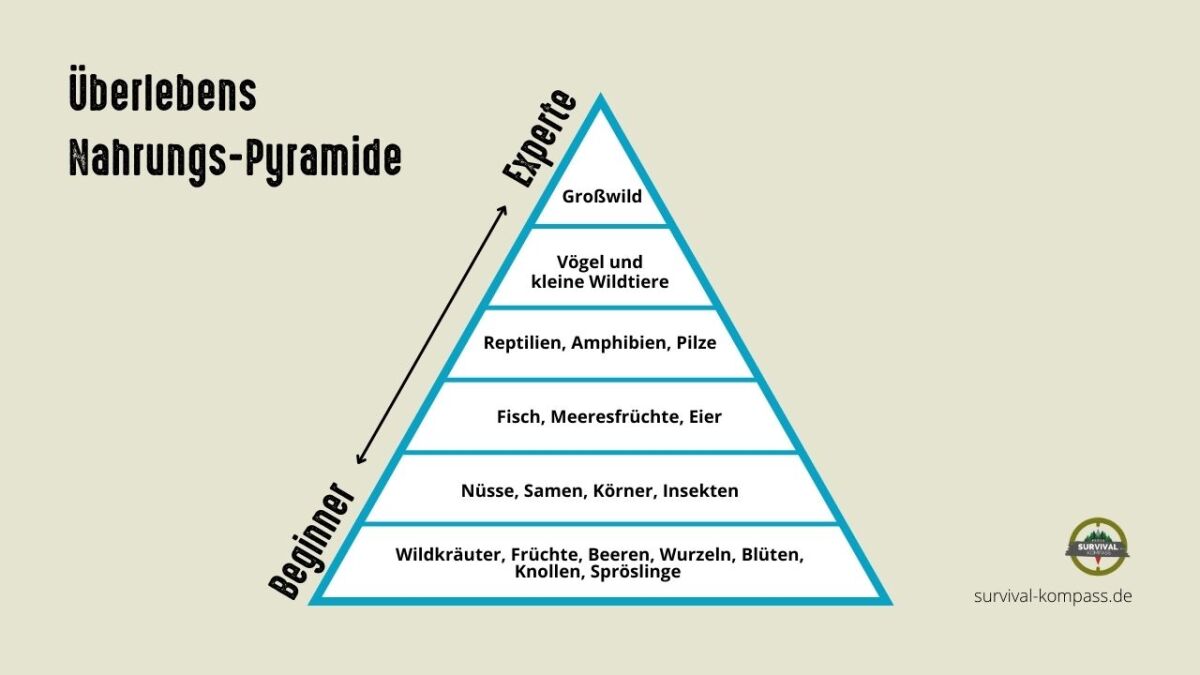
I'll show you what you can immediately eat in the forest
Now I'll list plants, fruits, trees, and roots for you. Here you can find a detailed list of edible wild herbs.
Many plants and fruits can be further processed in your kitchen, for example into jams or pesto. But I won't go into that.
This guide will show you what you can IMMEDIATELY eat in the forest.
I won't go into mushrooms either, as mushrooms are not plants and I DO NOT recommend mushrooms in survival situations. Why and why mushrooms are not suitable for survival, I explain in my video.
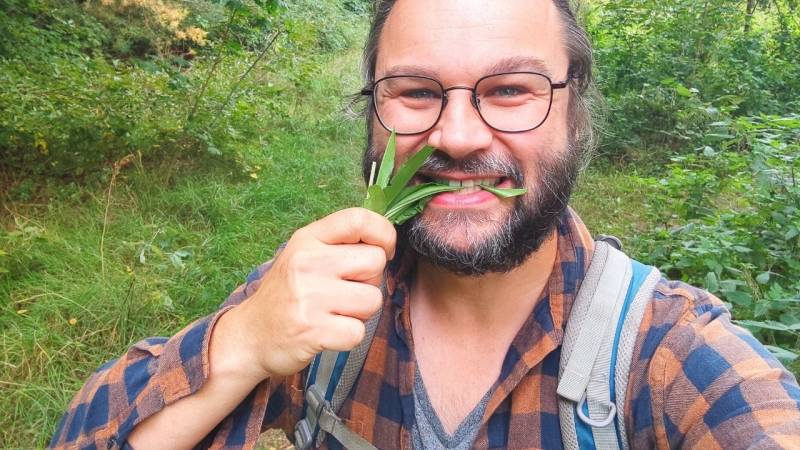
I assume that you have a minimal equipment, such as a metal container for cooking leaves, fruits, and roots. And you should be able to ignite a fire with a fire steel.
I often provide a month in parentheses for each plant part - that is the best harvest time. And please note, the images used here are only suitable to a limited extent for identification.
Which Edible Plants You Should Know
Even though plant leaves don't provide many calories (15 to 20 kcal per 100 grams), you can still get important nutrients from edible plants.
Whether you're in an emergency or not: green leaves give you minerals and vitamins (so-called micronutrients, learn more about them in my guide here).
And one positive aspect must not be overlooked:
Despite their water content, plants are filling. The contained fiber swells in the digestive tract.
Plantain
The plantain is a perennial that grows up to 0.5 meters tall. Generally, the plantain tastes a bit like mushroom.
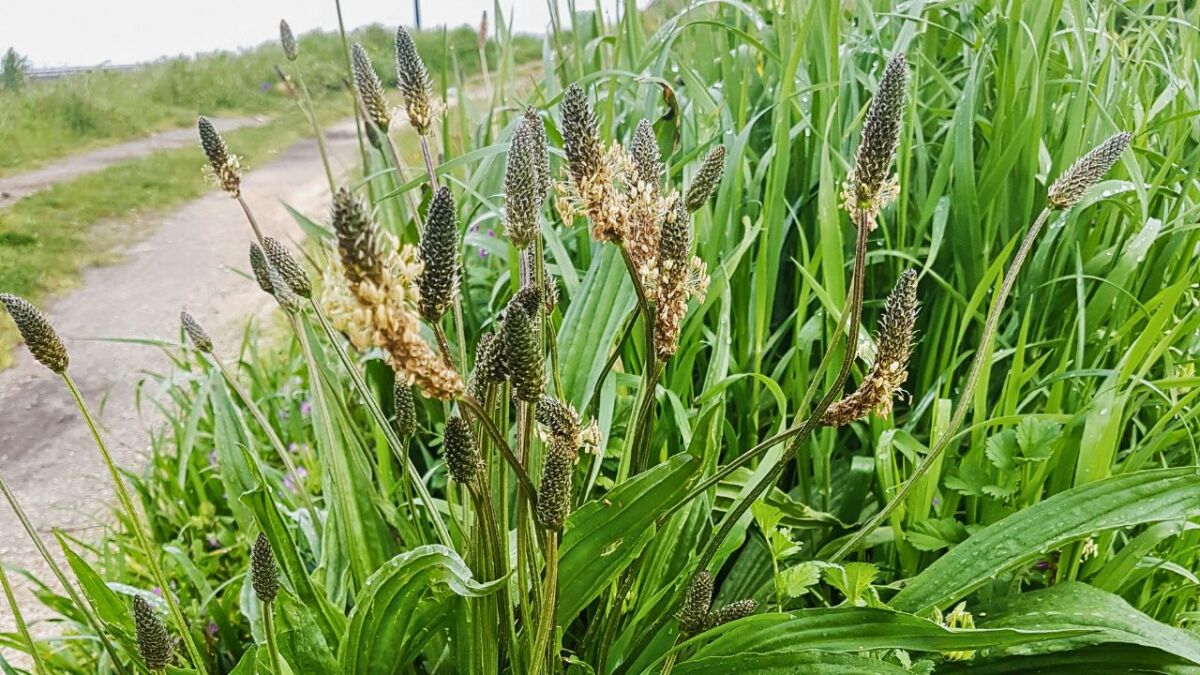
Edible parts:
- Leaves, shoots and stems, raw (April to June)
- Leaves also cooked as tea
- Flowers and buds, raw (May to July)
- Seeds and fruits, raw (August to October)
- Best to cook the roots to make them soft, season with salt or other spices (October to April)
Survival fact: freshly crushed leaves are suitable for stopping bleeding from small wounds. In addition, crushed leaves help against insect bites.
Broadleaf Plantain
The broad plantain is perennial and grows up to 0.3 meters high. Like plantain, it tastes slightly of mushroom.
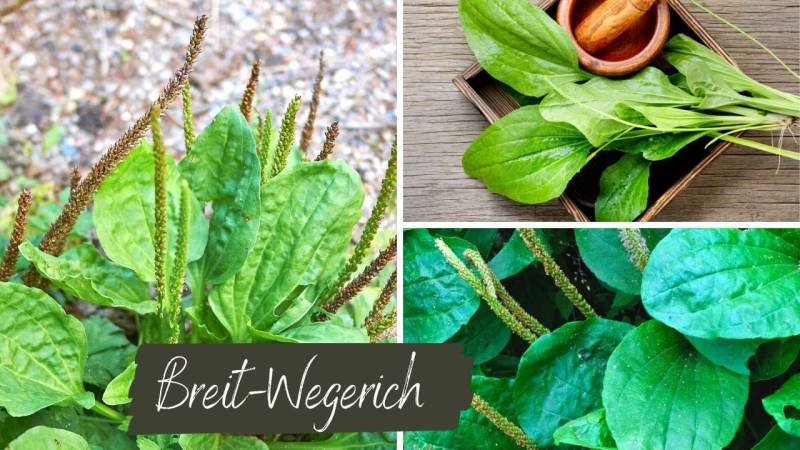
Edible parts:
- Leaves cooked as spinach, as tea, or fermented as sauerkraut (April to May)
- Leaves, shoots, and stems, raw (April to May)
- Flowers and buds, raw (May to June)
- Seeds and fruits, raw (August to October)
Dandelion
When we talk about dandelion, we are referring to the common dandelion. There is also a fall dandelion, which is also edible, so no worries.
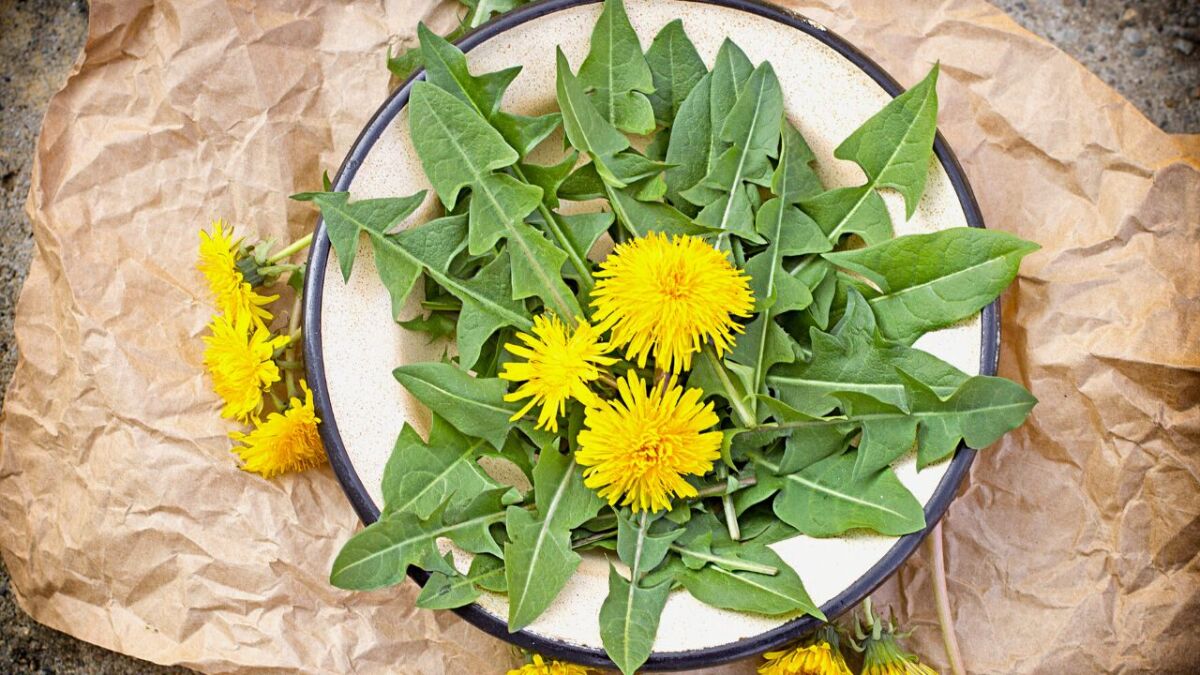
The dandelion is a perennial plant that can grow up to 0.4 meters high and produces yellow flowers.
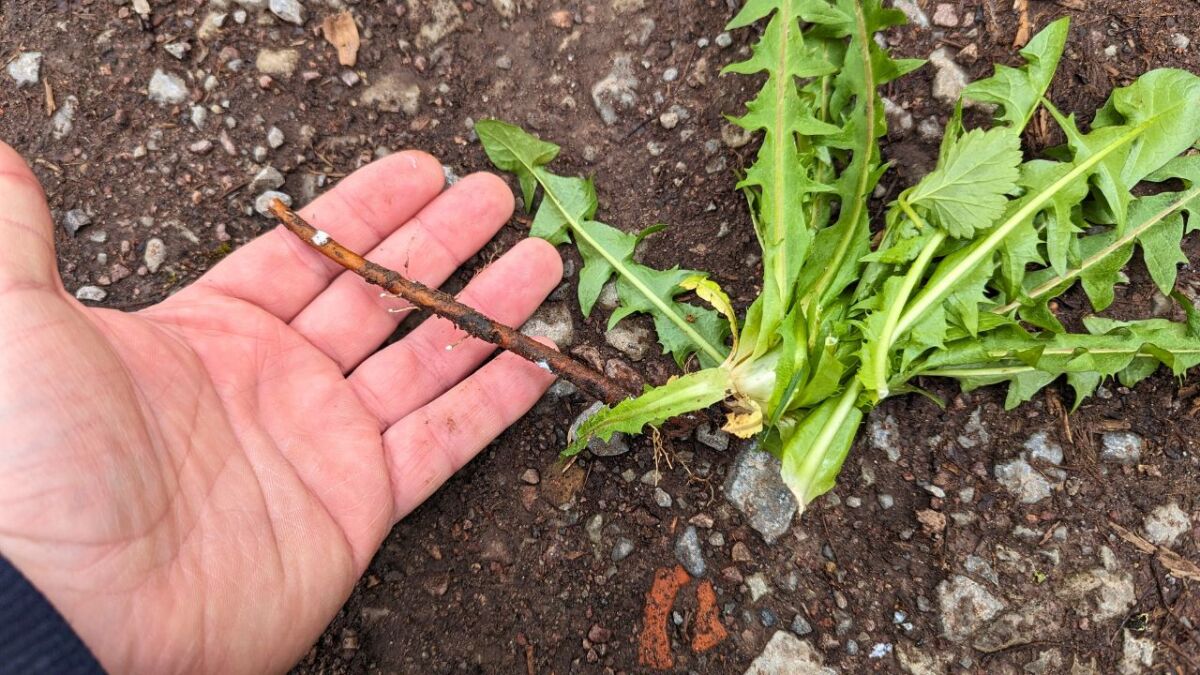
The following parts are edible:
- Leaves, fresh or as spinach (March to October)
- Flowers, as tea or fried (April to September)
- Roots, raw, chopped small, cooked as vegetable (September to March)
Survival tips for dandelions:
- The leaves become milder if you soak them in water for an hour.
- The flowers have a sweet, honey-like taste in the summer.
- You can make a coffee substitute from roasted and dried roots.
Furthermore, read my comprehensive guide to dandelions.
Wild Garlic
You can find wild garlic in wet and shady areas, such as deciduous, mixed, and riparian forests.
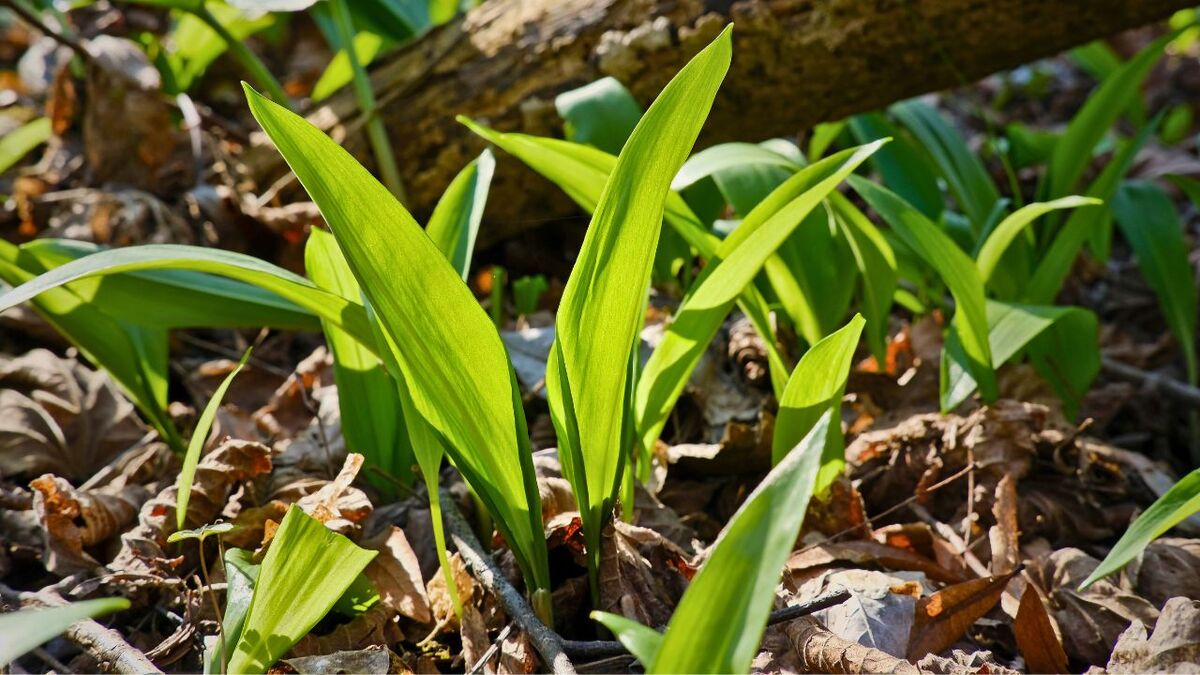
The following parts of the Wild Garlic are edible:
- Leaves (strongly scented of garlic), raw (March to April)
- Flowers and buds, raw (April to June)
- Seeds (like pepper kernels), raw (June)
- Bulb (spicy) at a depth of 20 cm, raw (May to February)
Wild Garlic strongly reminds many people of garlic. It is spicy, intense, and aromatic. It contains a lot of vitamin C and potassium. Therefore, it fits perfectly into many Bushcraft recipes.
Caution: The plant is easily confused with the poisonous autumn crocus (5 g of seeds are deadly), lily of the valley and arum.
Symptoms of confusion with autumn crocus
After several hours of ingestion, nausea, dizziness, shock, severe abdominal pain, frequent urination, rapid pulse, heart arrhythmias, paralysis, bloody diarrhea, and blue lips occur. Countermeasures: Pump and empty the stomach. Drink plenty of water. Emergency respiration may be necessary.
Symptoms of confusion with Lily of the Valley
Skin irritation upon contact, nausea, dizziness, heart arrhythmias, diarrhea, rapid pulse. During the poisoning, however, the pulse becomes very calm again and breathing slows down. Countermeasures: Pump and empty the stomach. Drink plenty of water. See a doctor.
Symptoms of confusion with arum
Severe skin irritation can occur just from contact. When consumed, nausea, vomiting, diarrhea, cramps, heart palpitations, high blood pressure and paralysis occur. Countermeasures: Call an ambulance immediately. Treat symptoms and wait for a symptom-free phase.
Severe burning in the mouth, swelling of the mouth and lips. Countermeasures: Drink a lot of water and, if necessary, see a doctor.
Read also
Wild garlic: Identifying, Gathering, Harvesting and Utilizing - Tips and Recipes – With my wild garlic guide, you bring the forest to your plate. Learn all about identification, collecting, and preparation of the green gold piece.
Stinging Nettle
The large stinging nettle is the most common in our region and is perennial. It grows up to 1.5 meters tall and can be found near settlements and at the edge of forests.
If you're looking for a vitamin-packed snack, grab the seeds and leaves.
The leaves are rich in magnesium, potassium, iron, and silicon. It also provides you with protein and vitamins A, C and E. In the seed, you'll find a lot of oil (30%) and a lot of vitamin E (up to 0.1%).
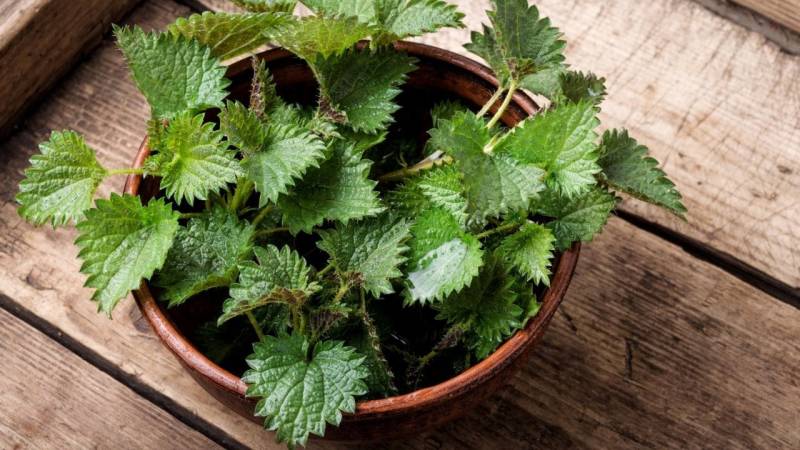
Edible on the plant:
- Leaves, raw (please roll flat or otherwise neutralize the stinging hairs first)
- Leaves, cooked as spinach or pesto
- Seeds, roasted, dried or raw, taste nutty (July to September)
- Buds, raw (June)
Interested in this wonderful plant? Then read my whole article on nettle and find out why monks and nuns in the Middle Ages were forbidden to eat the seeds.
And if you're looking for a quick overview, here's my short video on nettle:
Ground elder
Ground elder mainly grows in moist and shady areas. The leaves taste like carrot and parsley. The flowers are sweeter, and the fruits are somewhat spicier.
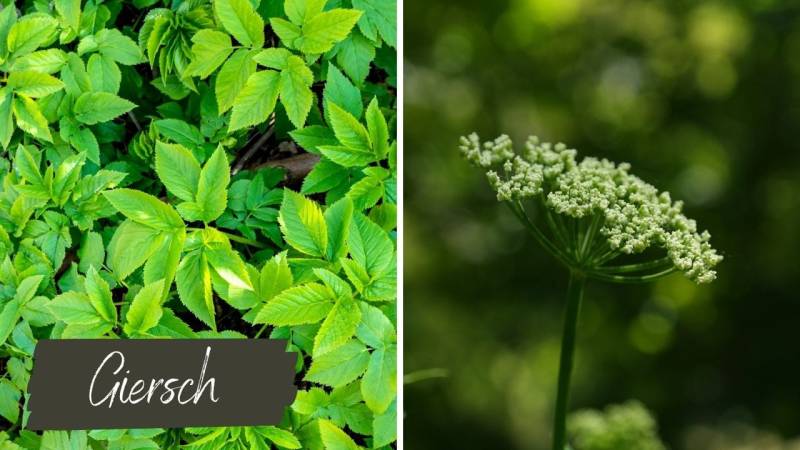
When it comes to ground elder, the following is edible:
- Leaves, raw or cooked (all year round)
- Flowers, raw or cooked (June to August)
- Stems and buds, raw or cooked (May to August)
- Fruits, raw or dried (July to September)
Survival fact: Ground elder has an anti-inflammatory effect. Take advantage of this and use the strongly crushed herb for compresses on burns. It is also said to help against insect stings.
Wood Sorrel
You know a clover leaf for sure, don't you? Those are the plants that people give each other for New Year's Eve and wish each other luck.
You'll be lucky if you find wood sorrel in the wild because it's a great food source. You can find wood sorrel in mixed forests on slightly acidic, loamy soils.
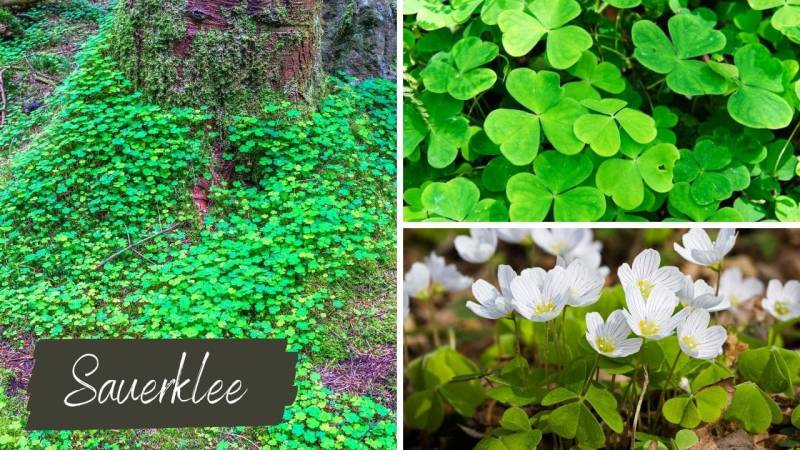
The following parts of wood sorrel are edible:
- Leaves, raw (April to June)
- Flowers, raw (April to May)
- Roots and stems, raw
- Fruits, raw (May, as they are soft then)
As the name of the plant suggests, it tastes slightly sour, somewhat like lemon.
Caution: You should not eat wood sorrel or other oxalic acid-containing plants such as spinach, chard, and rhubarb every day for months on end. However, you can cook out the oxalic acid, as it is water-soluble.
👉 You can find even more great information about wood sorrel here: Finding, collecting and using wood sorrel – the complete guide
Common Chickweed
I used to have a budgerigar, and as a child, I often collected common chickweed for him. He gobbled it up. It was apparently incredibly tasty.
Years later, I tried common chickweed myself and indeed it is delicious. It grows everywhere: in the garden, behind the house, in fields, on fallow land, on roadsides and verges.
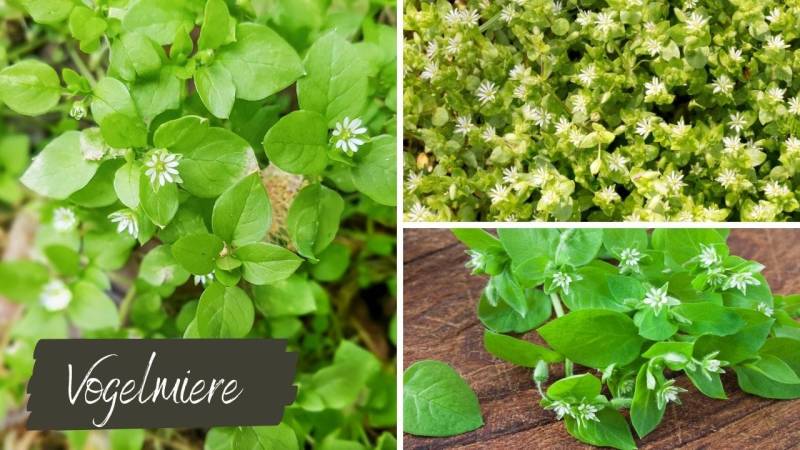
Everything is edible on the chickweed (grows from March to October, but can also be found in winter):
- Leaves, raw or cooked like spinach
- Stems, raw
- Flowers, raw
- Fruits, raw
This small plant, which grows close to the ground and only grows to a maximum height of 10 cm, possesses the full power of the wilderness.
The fact is that the chickweed contains:
- twice as much calcium as lettuce
- three times as much potassium and magnesium as lettuce
- seven times as much iron as lettuce
- at least twice as much vitamin A, C, B1, B2, and B3 as lettuce
In the wild, you can use chickweed on skin rashes, burns, abrasions, and minor injuries. The plant has cooling, anti-inflammatory, pain-relieving, and digestive properties.
And because chickweed is such a powerhouse plant, I have written a comprehensive chickweed guide.
Forest Strawberry
You can mainly find forest strawberries in clearings in forests with nutrient-rich clay soil.
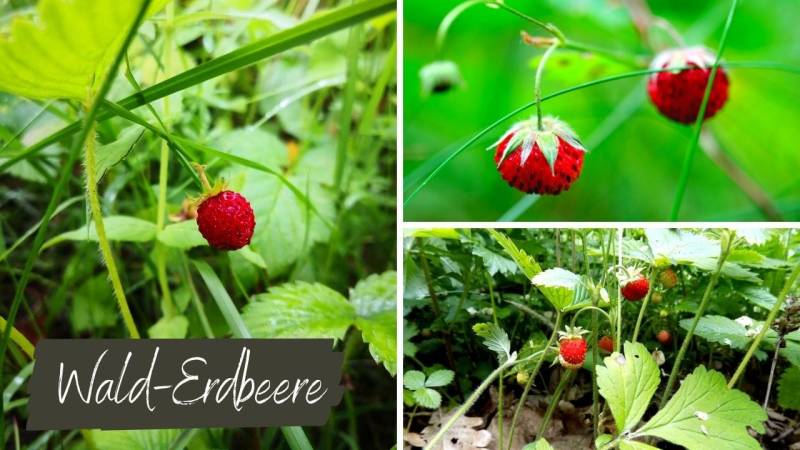
You can eat many things from the forest strawberries:
- Leaves young, raw or cooked (March to April)
- Leaves old and firm, fresh or dried, as tea (April to July)
- Fruits, raw, cooked, squeezed as juice, dried as tea (June to July)
- Flowers, raw, as tea (April to May)
As a calorie bomb in an emergency, strawberries are not suitable since they are very low in calories.
Survival fact: If your throat is inflamed (sore throat), gargle with strawberry leaf tea. The fruit itself is even better and more effective against fever than the leaves. Additionally, it has been scientifically proven that strawberries have a positive effect on the liver and gallbladder.
Raspberry
Raspberries grow in clearings and along roadsides. They can reach a height of up to 1.5 meters.
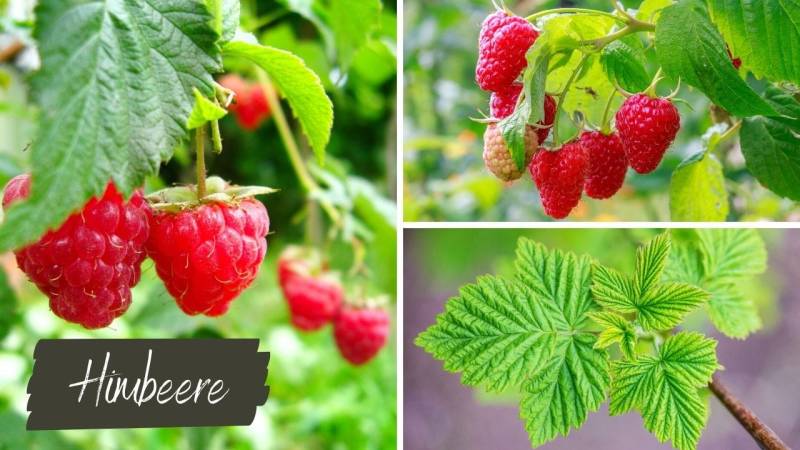
You're probably familiar with the edible fruit, but there's more to discover:
- Young leaves, raw or cooked (April)
- Old, firm leaves, fresh or dried, used as tea (until September)
- Fruit, raw or dried and used as tea (August to September)
- Flowers, raw (May to June)
Survival fact: If your throat is inflamed (sore throat), gargle with raspberry leaf tea.
Blackberry
Blackberries also grow in clearings and along roadsides. They can reach a height of up to 5 meters.
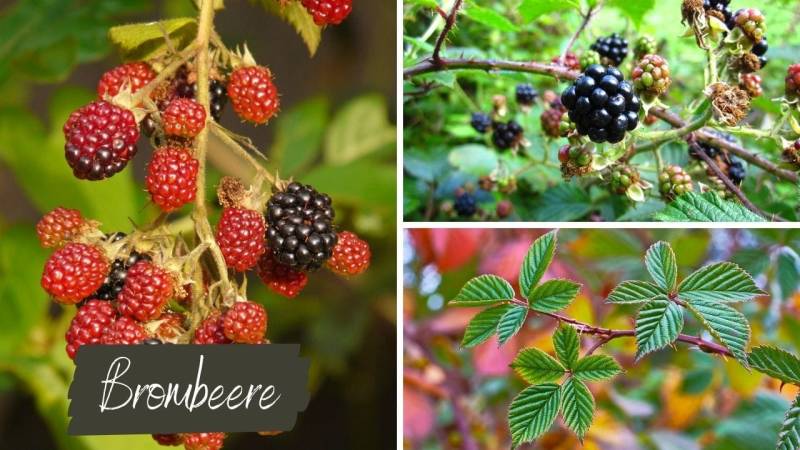
You're probably familiar with the edible fruit, but there's more to discover:
- Young leaves, raw or cooked (April)
- Old, firm leaves, fresh or dried, used as tea (August to September)
- Fruit, raw or dried and used as tea (August to September)
- Flowers, raw or fresh as tea (June to July)
Survival fact: The leaves are effective against diarrhea due to their tannin content. They can also be used as a gargle for throat and mouth inflammation.
Overall, the blackberry is a genius survival food. It contains a lot of provitamin A, vitamin E, B-vitamins, magnesium, iron, zinc, manganese, and copper.
Daisy
Everyone actually knows the Daisy, right? It grows almost everywhere in meadows and pastures.
Furthermore, it can hardly be confused with anything else. The most power is in the flower center.
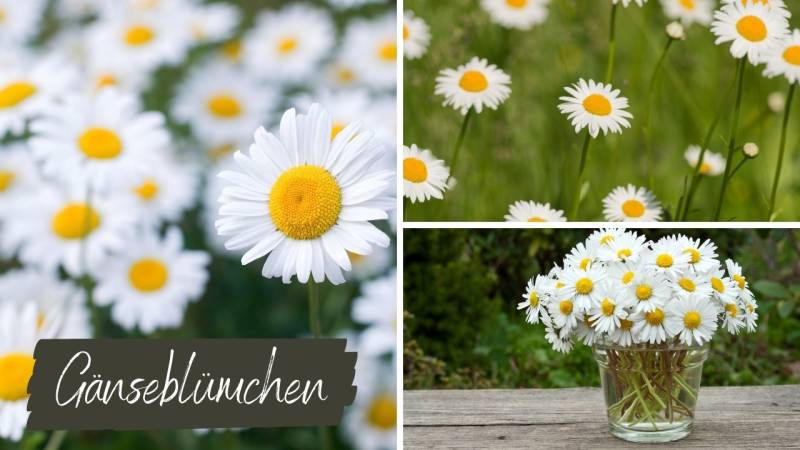
Look, you can eat all of this:
- Leaves, buds, and flowers, raw, cooked, or as tea (January to November)
- Seeds, raw or roasted (August to September)
Unimpressive as it may seem, the Daisy has a lot of potassium, calcium, magnesium, iron, vitamin A and C, essential oils, tannins, saponins, bitter substances, mucilage, fatty oil, and inulin.
Survival fact: externally applicable against acne and wounds.
As the Daisy is so versatile, I have devoted a comprehensive guide to this great plant.
Sorrel
Sorrel grows wherever there is nutrient-rich soil. However, you can find the most of it in meadows and pastures.
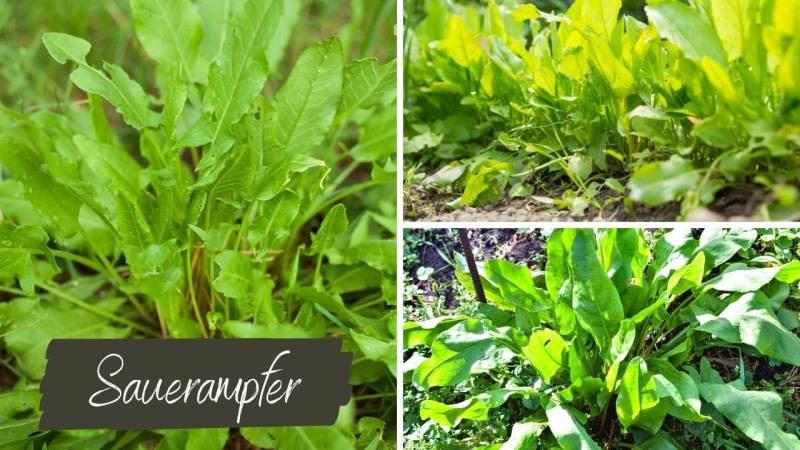
Sorrel is a wild vegetable that my great-grandmother used to cook with. Here is what you can eat:
- Leaves, raw and cooked (March to October)
- Shoot tips and buds, cooked (April to May)
- Seeds, fresh as tea (August to October)
- Roots, dried as tea
Survival Fact: Sorrel contains up to 2% protein (pork contains 27%).
Because sorrel is so fantastic, I have dedicated an entire guide to it.
Nuts provide you with fats
Nuts are fruits where the seed is wrapped in a woody shell.
Now I will list the most common nuts and show you how to eat them.
Hazelnut
The common hazel is a shrub, and you collect the nuts from it in September. You can eat them raw or roast them.
Hazelnuts are rich in fatty acids, sugar (up to 5%), protein (20%), vitamin B1, B2, E, calcium, magnesium, manganese, silicon, phosphorus, potassium, and trace elements.
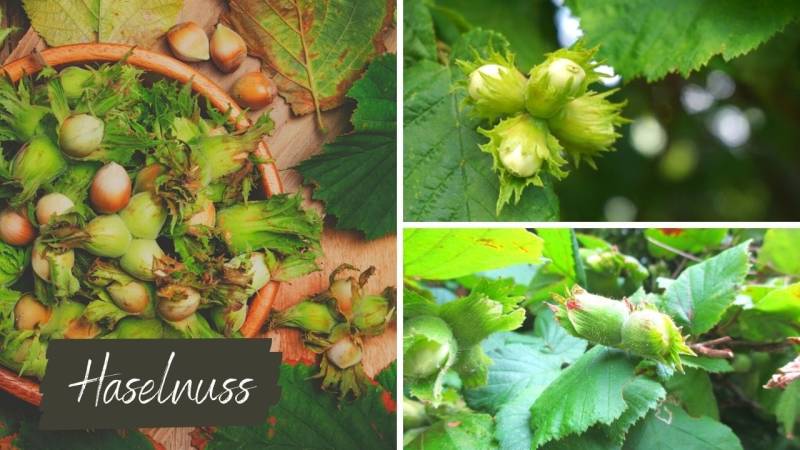
But not only the nuts are edible. You can also eat the following from the hazel:
- Leaves young and tender, raw or cooked (March to April)
- Flower catkins, rich in protein, as a flour substitute (February to April)
Healing effects: The flower catkins have a sweating effect like a tea.
Survival fact: Our ancestors already knew the hazelnut in the Stone Age. It is nutritious and can be stored well. A mash from the nuts is said to be helpful for (suppurating) wounds.
Walnut
The walnut tree can grow up to 25 meters high. It takes many years for the tree to bear fruit.
The nuts contain a lot of magnesium, potassium, calcium, copper, vitamins (especially vitamin E), and fatty acids. According to recent research, walnuts also have a cancer-fighting effect.
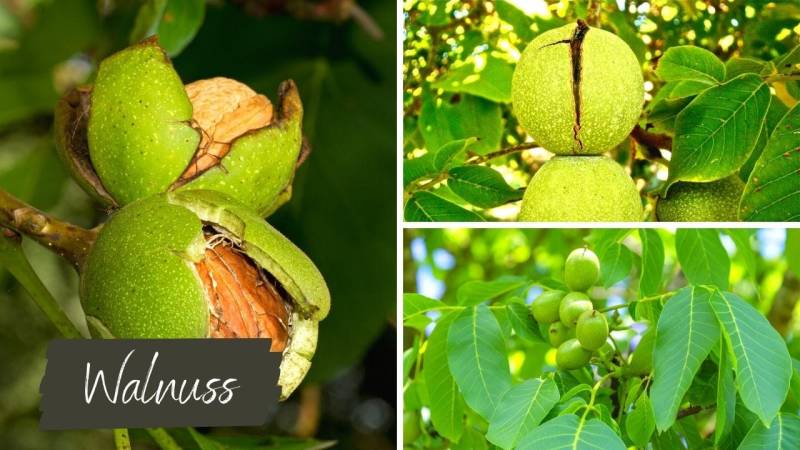
Not only the nuts are edible. Check out what else the walnut provides:
- Sap from the tree, collected by tapping the trunk (in April)
- Seeds, pressed, for oil production (in September)
Chestnuts
Unfortunately, chestnuts are only found sporadically in Germany. If you are traveling in Western Germany, you may have more luck since they mainly grow there.
The fruit of the chestnut tree is edible and can be harvested from August to September. They have a nutty-sweet taste.
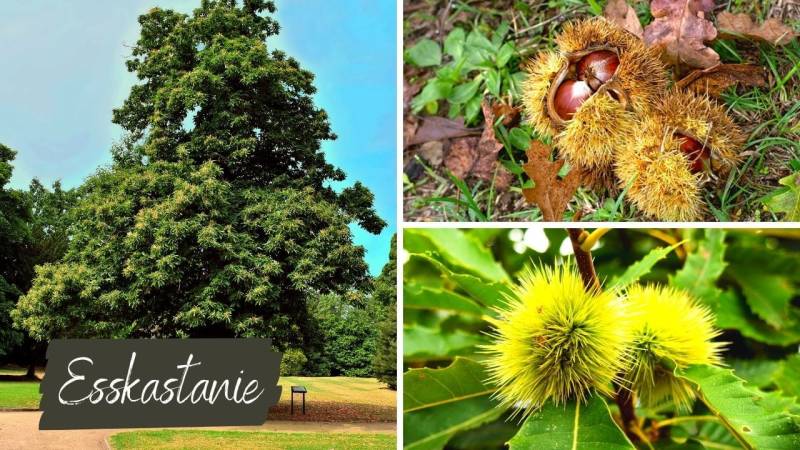
To prepare chestnuts, peel them and roast, bake, or boil them. They can also be used to make a delicious purée when cooked.
Chopped chestnuts can also be used as a coffee substitute (for more information, read 6 Ways to Brew Coffee Outdoors).
In emergencies, chestnuts can be a lifesaver due to their high carbohydrate content and the presence of potassium, magnesium, manganese, copper, unsaturated fats, and Vitamins B1, B2, B5, B6, and E.
Acorns
The oak tree, especially the pedunculate oak, grows in our deciduous forests. The oak is still the most common tree species in Germany. You will probably immediately think of acorns, the fruit of the tree.
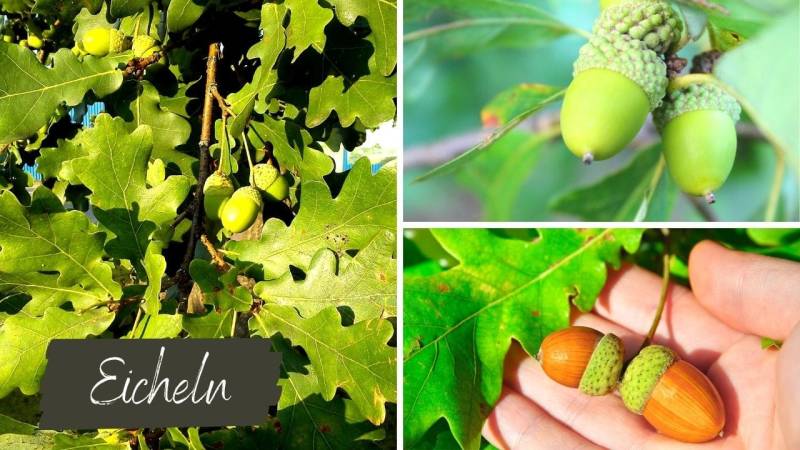
Let's take a look at what you can make from the seeds (acorns):
- Patties or purée - pour hot water over the acorns, peel them and then purée them. Put them in a cotton cloth and wash them several times in water to remove the bitter substances.
- Acorn coffee or flour additive - roast the chopped acorns for this purpose
- Leaves, dried and pulverized as a flour additive
Acorns taste bitter, nutty and dull - but they contain fatty oil. So don't expect too much from the fruit. Leaves and shells are bitter (8 - 20% tannins, The bark is used for tanning animal hides).
Beech nuts
The fruits of the beech tree, beech nuts, are edible (September) and taste slightly of almonds. However, not raw, as it can make you feel sick and give you headaches and stomach aches.
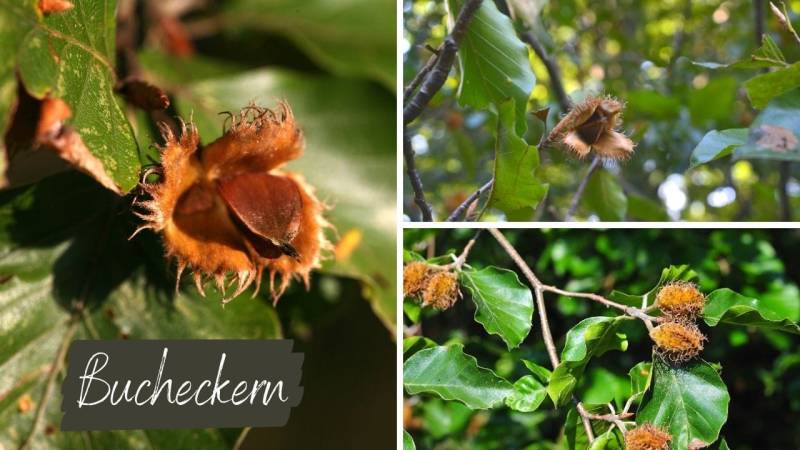
Peel the beech nuts and roast them over the fire. This breaks down the problematic substances. You can then eat them pure, use them as a coffee substitute or as a flour additive.
Beech nuts are fantastic: they contain up to 45% fatty oil, 40% starch (carbohydrates), up to 25% protein and vitamins B6 and C.
Additionally, it is possible to produce oil from the beech nuts, but this may be difficult to do in the wilderness.
Since beech nuts are a true survival food, and you can even make beech nut butter (like peanut butter) from them, I have put together a detailed guide for you. There you will find recipes for beech nuts and more information on collecting, processing, and eating them.
The very young leaves and seedlings of the beech tree are edible when chopped finely and eaten raw.
Further down, I will write about the bark of the beech tree, so don't miss that.
Fruits give you vitamins
You have surely already discovered the strawberries, blackberries, and raspberries among the plants above. But there are many more fruits to snack on.
How about:
- Strawberries
- Blackberries
- Raspberries
- Rose hips
- Rowan berries
- Hawthorn
- Black elderberry (only eat cooked!)
- Cornelian cherry
- Yew (caution, highly toxic! Only eat the pulp!)
- Service tree
- Cherry
- Cherry plum
- Blueberry
- Cranberry
- Sea buck thorn
- Red currant
- Gooseberry
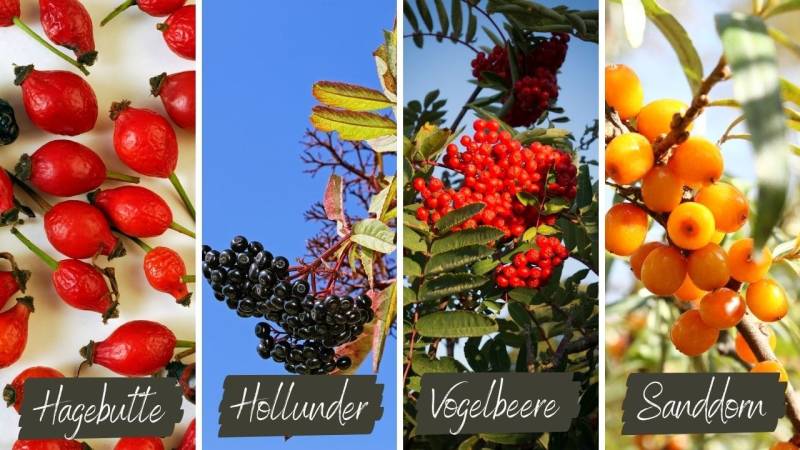
Yes, you can also eat trees and shrubs
You can often eat the young leaves, fruit, seeds, and cambium (inner bark) of trees.
The cambium usually needs to be cut into fine strips to be edible.
Attention: Only take cambium from freshly felled trees. Injuries to the bark often cause significant damage to the tree.
Read more about the topic in my article "Can you eat tree bark to survive?". I will go into more detail about cambium and show you exactly where to find it.
Linden
- young tender leaves raw or as tea
- flowers as tea
- buds raw
- seeds, raw (August to September)
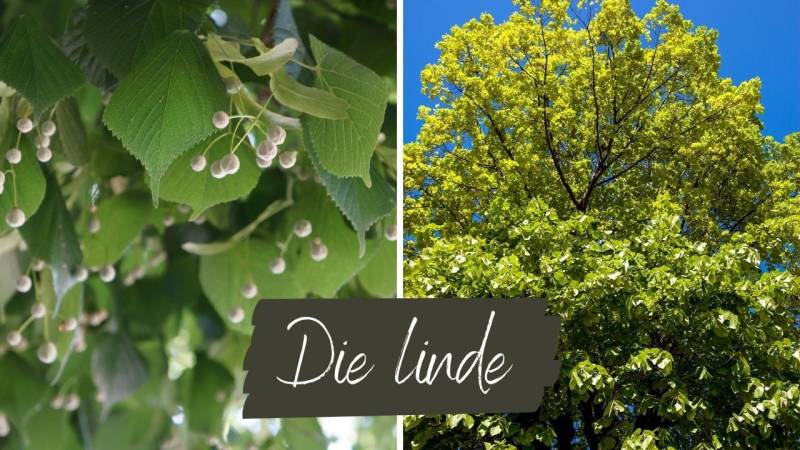
Beech
- young leaves, raw (April to March)
- cambium, raw or cooked
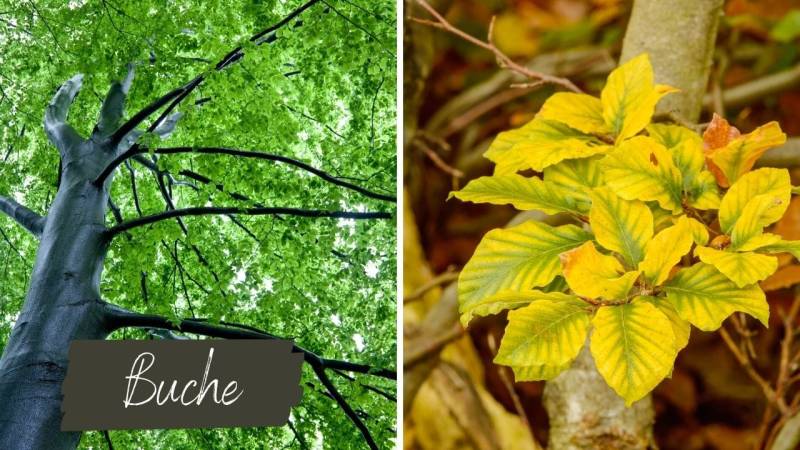
Oak
- young leaves, raw (April to March)
- acorns, as mentioned above
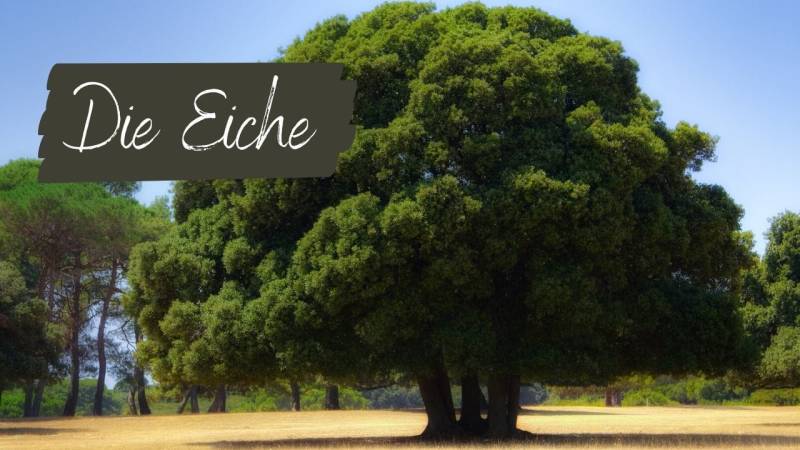
Birch
- Birch sap, raw (March to April)
- Cambium, raw or cooked
- Leaves as tea
- Leaves, young, raw (April)
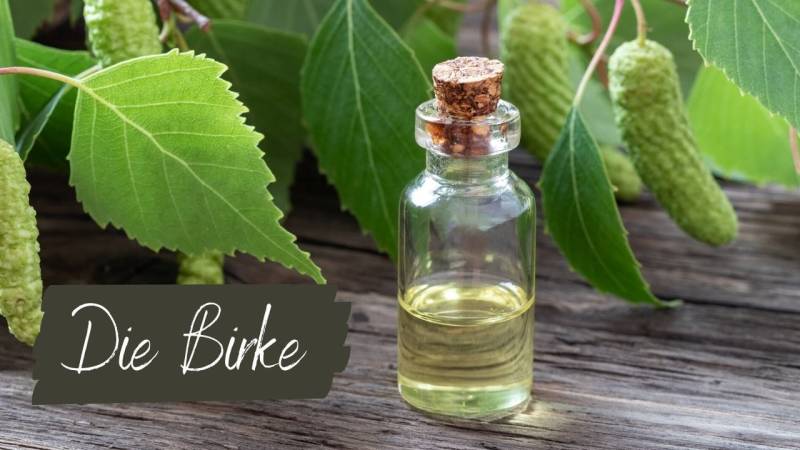
Spruce, pine, and Douglas fir
- Young, soft tips, raw or as tea (April to May)
- Cambium, raw or cooked (March to April)
- Seeds, raw or roasted (autumn)
- Needles as tea (all year round)
- Caution: young spruce and Douglas fir can be confused with the highly toxic yew
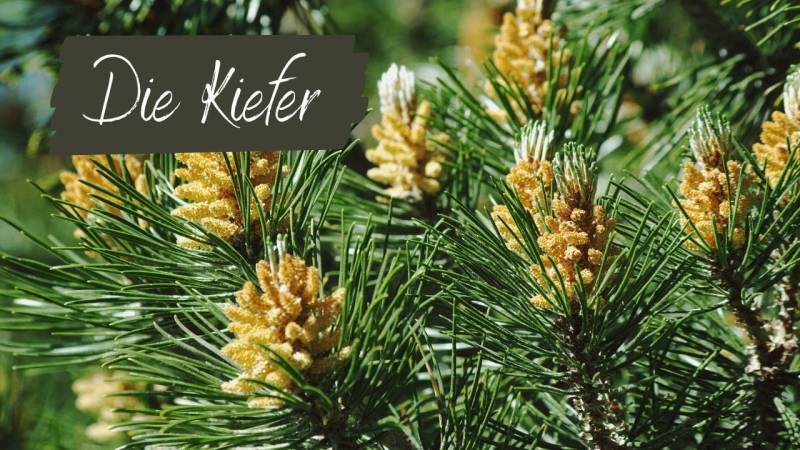
Maple
- Leaves, young, raw (March to April)
- Maple sap, raw (March to April)
- Cluster of flowers, raw (April)
- Seeds, cooked or roasted (June to September)
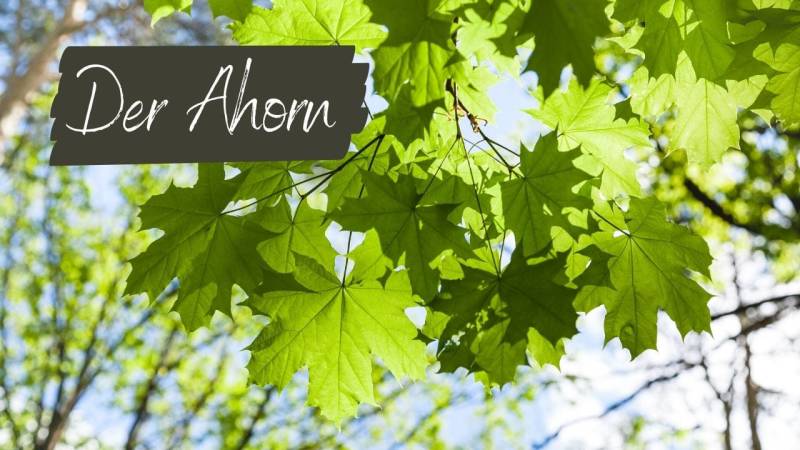
Willow
- Leaves, young, raw (April)
- Leaves as tea (April to July)
- Cambium, raw or cooked (March to April)

Trees have a lot to offer when it comes to survival. Be sure to check out my article: 6 Trees Every Survivalist Should Know.
These Roots Will Give You Power
Roots are fantastic when you're looking for carbohydrates. I can recommend the following plants:
Wild Carrot
The wild carrot is a biennial plant, meaning it requires two growing seasons before it flowers. It is a pioneer plant that grows on meadows, roadsides, and embankments on clay and loam soils.
In the first year, the wild carrot stores sugar in its roots, which can be harvested in the second year from September to early spring.
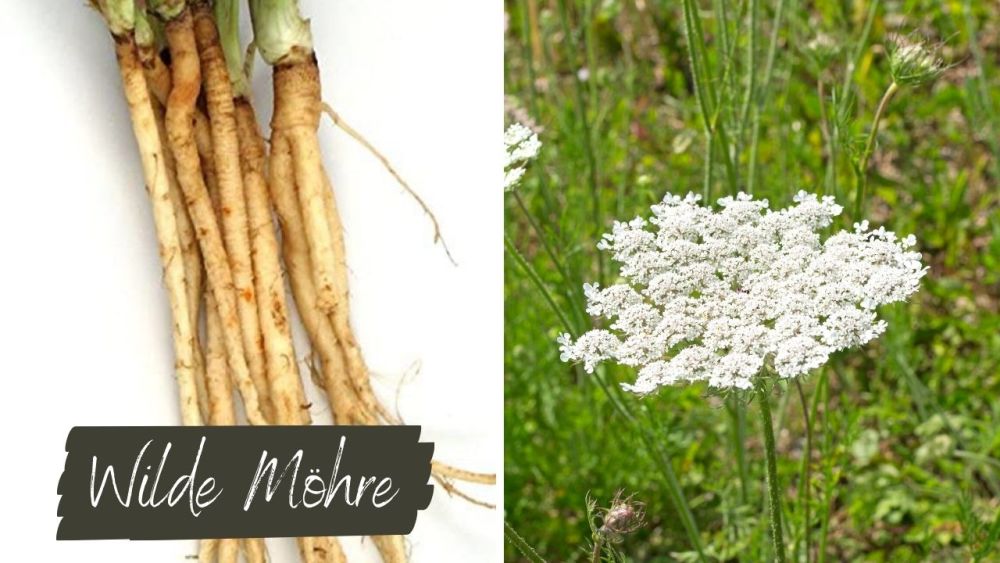
If you harvest it fresh, it will still be soft, and you can eat it raw. If it is already hard, it is better to cook it. Additionally, the leaves, flowers, and fruits of the wild carrot are also edible.
⚠️ Caution: Wild carrots can be confused with poisonous ground elder and deadly hemlock. ⚠️
You can easily distinguish the plants by their different flower stems. So, before collecting, be sure to check out my guide to wild carrots. There you'll find all the distinguishing criteria.
Dandelion
You probably know dandelions. Perhaps, however, you only know them as something you should pull out of your parents' or grandparents' garden.
But in reality, the dandelion is wonderfully beautiful in its wild way.
You can eat the roots of the dandelion, among other things, raw and chopped or cooked as a vegetable (September to March).
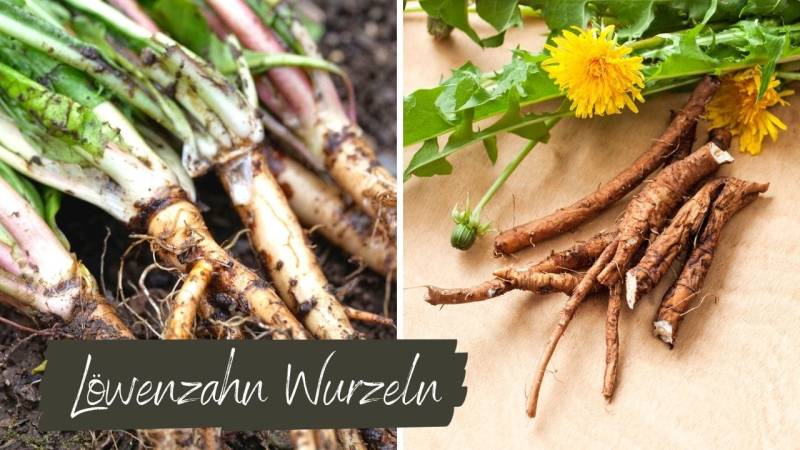
A big plus is that the dandelion has no poisonous lookalikes.
Bulrush
You can find the bulrush near water. It likes nutrient-rich, standing or flowing water.
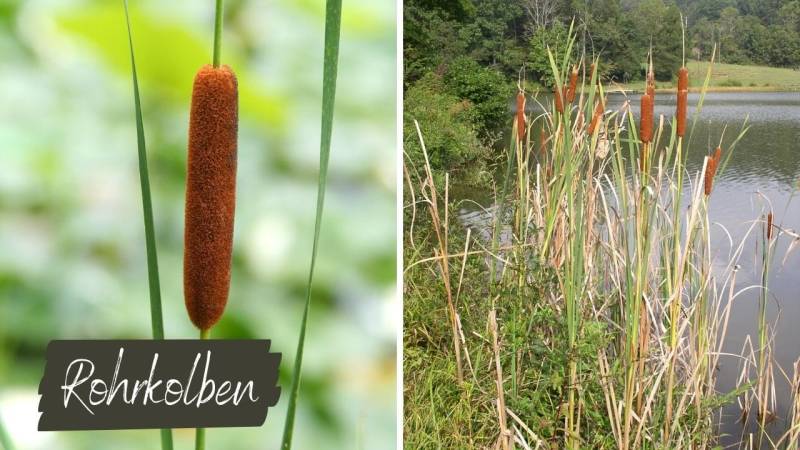
The root is rich in starch and perfect for a meal (tastes like chestnuts). It is best harvested between March and autumn. As they are very fibrous, they should be cut into small pieces across the fibers and cooked after washing.
You can also make a purée out of the cooked roots. However, you would need a sieve for that.
Or you can put the bulrush root directly into the fire. After roasting, you peel off the black shell and enjoy the mild taste.
Survival Fact: The dry plant seeds can be used as tinder for your bushcraft fire.
Common Chicory
You can harvest the roots of common chicory from September until next spring. The roots are excellent as vegetables and coffee.
For the vegetables: Peel, chop and soak the roots for two hours. While the roots are soaking, you can nibble on the flowers.
For the coffee: dry, roast, grind, and brew.
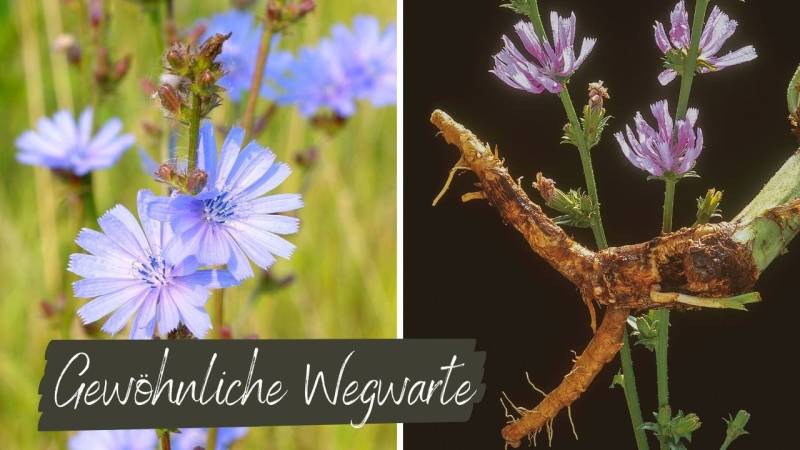
Alliaria petiolata (Garlic Mustard)
You can find the garlic mustard on roadsides, forest paths, hedges and clear-cut areas. The garlic mustard is biennial.
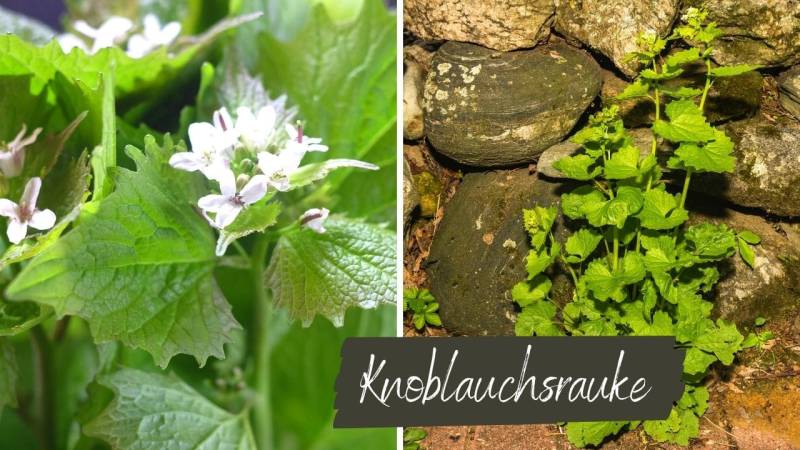
The roots are best harvested in autumn and spring, when they carry the most energy. They taste spicy.
The leaves and shoots of the garlic mustard are also great (tasting like garlic and watercress). From April to June, young leaves can be harvested and taste delicious raw as well as cooked as a vegetable.
Jerusalem artichoke
In English, the plant is known as "Jerusalem Artichoke" or "Topinambur". I got to know it that way a few years ago and appreciate it as an alternative to potatoes. It grows in the lowlands and loves nutrient-rich sandy and loamy soils.
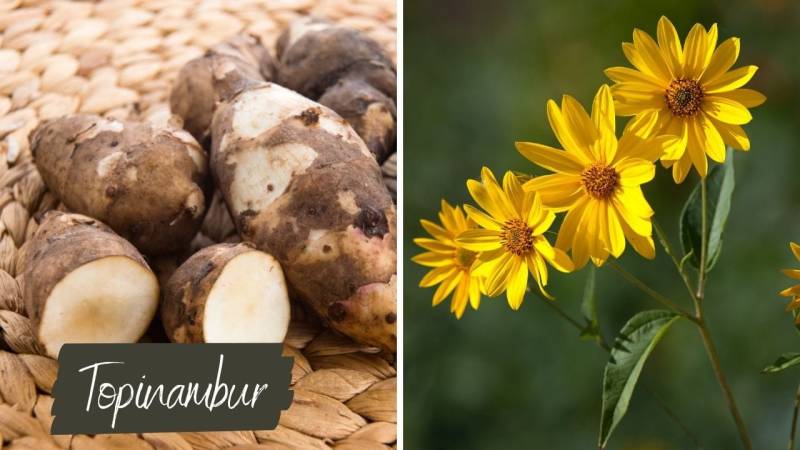
The tubers of the Jerusalem artichoke can be eaten raw or cooked as a vegetable. A delicious oatmeal can be made with various spices.
My favorite way to eat Jerusalem artichoke is to cut the bulb and use it in a soup. It is one of the world's best soup vegetables.
Note: Too much of the good Jerusalem artichoke leads to persistent flatulence. ;-)
Jerusalem artichoke: The forgotten tuber – Your survival ace up your sleeve – Topinambur (Jerusalem Artichoke): The edible survival tuber for the winter. Learn to identify it safely harvest it & prepare it at the campfire.
Thistle (crested and cabbage thistle)
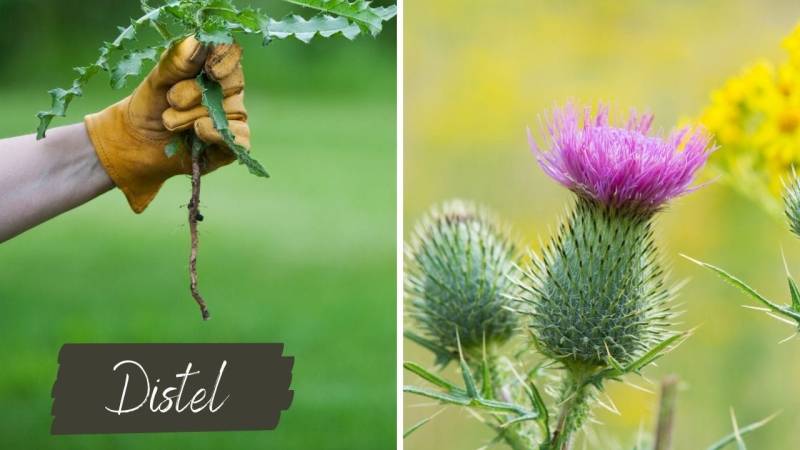
In the first year, in autumn/winter, harvest the tender roots. This is what you do with the root:
- You can dry them and make vegetable powder out of them
- You can cook them and make an oatmeal
- You can eat them raw when they are still very young
By the second year, the roots are already woody and are no longer suitable for consumption.
Harvesting Wild Plants Safely
Now, maybe you are not in an emergency right now, but you still want to indulge in tasty little plants, nuts, and tree parts.
Then I give you the following tips:
- Only collect the plants that you know very well - never take a risk.
- Do not collect your food on roads, forest paths, or cultivated meadows. Road plants are contaminated with exhaust fumes. There is often litter along hiking trails and dogs urinate there. Fertilizer is used on cultivated meadows.
- Only collect as much as you need. Take the young leaves so that the plant can produce a flower, and then seeds through the old leaves and stems. This is how it multiplies.
- Never collect in nature reserves, even if the temptation for the purest organic plants is great.
- Take note of your collection sites, so you can harvest again every year.
- Take a suitable bag with you, like a collecting bag for your belt.
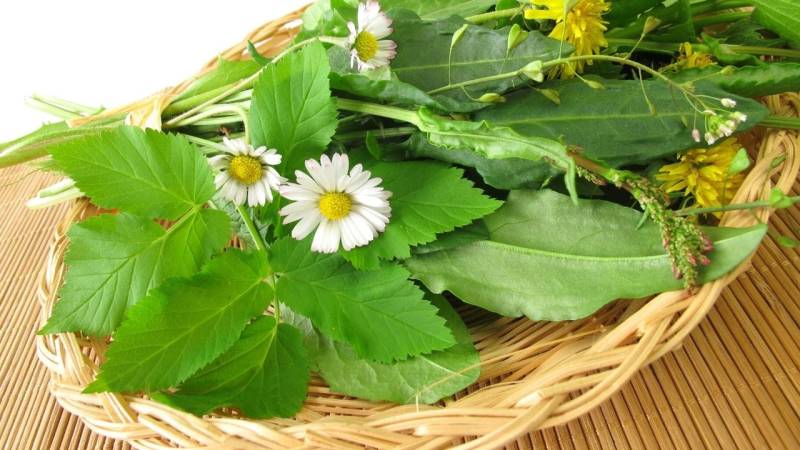
My Book Recommendation
I love the book "Edible Wild Plants" by Steffen G. Fleischhauer. The book presents the 200 most common edible wild plants in a clear and concise manner.
It contains many photos, how the plants taste and for us survivalists, it is a treasure trove of information.
You must now surely be tempted to go out, right?
Just go outside or to the nearest park.
Take a plant identification book with you and get down on your knees.
And you will see, you are guaranteed to find something to take with you.
It's fun, isn't it? Learning comes naturally.
And if you can find this food in the warm season, then work your way to winter because even in the cold season you can find plenty of emergency food.
Write in the comments which important edible plant should still have a place here. What else comes to your mind?

Sources for the guide
Essbare Wildpflanzen Ausgabe: 200 Arten bestimmen und verwenden

Author of the guide
Martin Gebhardt
Hey, I'm Martin. On my blog, you will learn the basics and numerous details about living in the wild. I think survival, bushcraft and the good life in nature are the keys to happiness. Find me here on Instagram or on YouTube. You can find more about my mission on the About Me page.
Was this guide helpful?
415 people found this guide helpful.
4.96 out of 5 points (419 Ratings)
Comments (0)
This post may contain affiliate links. So if you click on the links and make a purchase, I will receive a small commission at no additional cost to you. Click here, to learn more about it.



